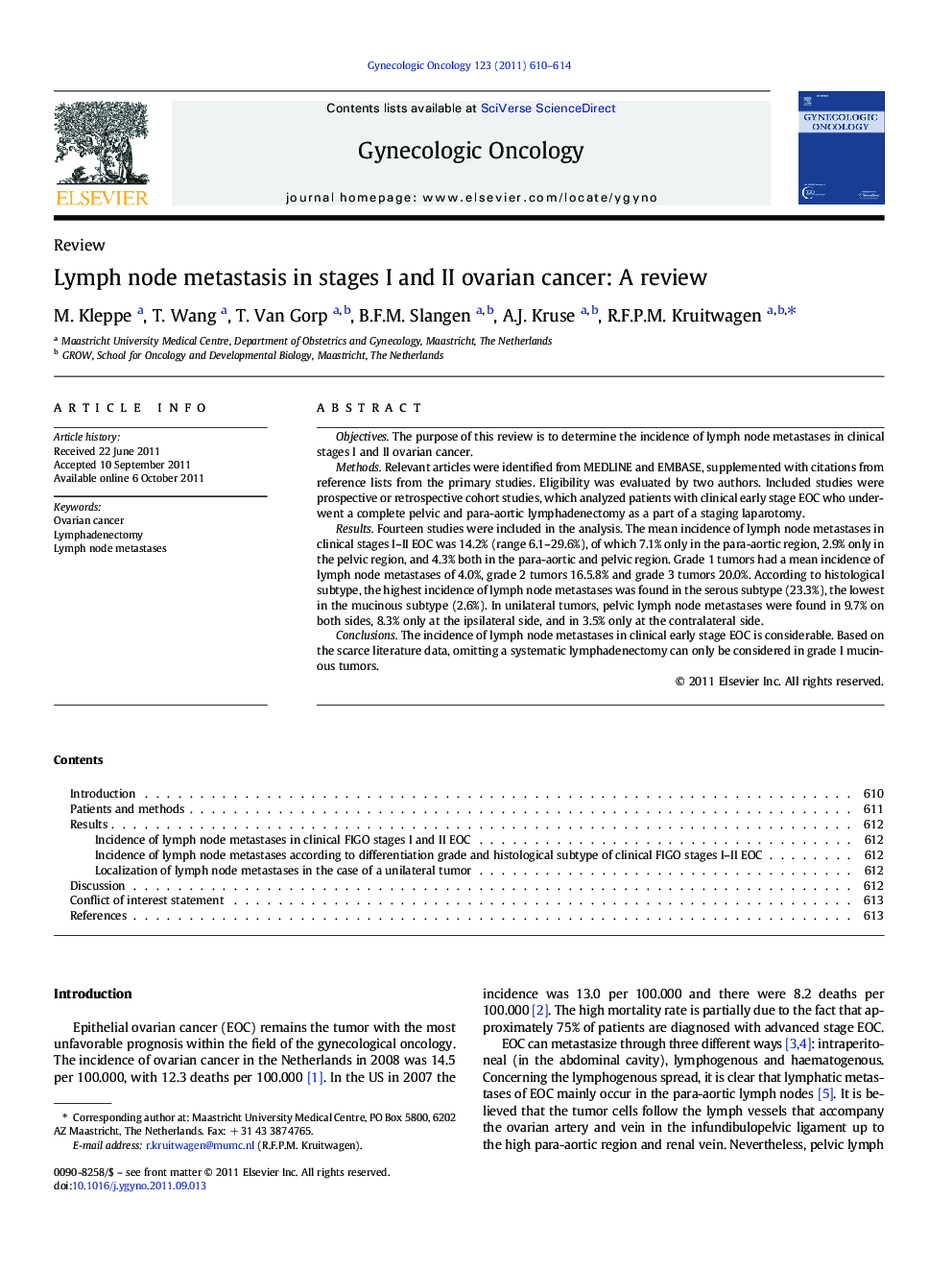| Article ID | Journal | Published Year | Pages | File Type |
|---|---|---|---|---|
| 3945370 | Gynecologic Oncology | 2011 | 5 Pages |
ObjectivesThe purpose of this review is to determine the incidence of lymph node metastases in clinical stages I and II ovarian cancer.MethodsRelevant articles were identified from MEDLINE and EMBASE, supplemented with citations from reference lists from the primary studies. Eligibility was evaluated by two authors. Included studies were prospective or retrospective cohort studies, which analyzed patients with clinical early stage EOC who underwent a complete pelvic and para-aortic lymphadenectomy as a part of a staging laparotomy.ResultsFourteen studies were included in the analysis. The mean incidence of lymph node metastases in clinical stages I–II EOC was 14.2% (range 6.1–29.6%), of which 7.1% only in the para-aortic region, 2.9% only in the pelvic region, and 4.3% both in the para-aortic and pelvic region. Grade 1 tumors had a mean incidence of lymph node metastases of 4.0%, grade 2 tumors 16.5.8% and grade 3 tumors 20.0%. According to histological subtype, the highest incidence of lymph node metastases was found in the serous subtype (23.3%), the lowest in the mucinous subtype (2.6%). In unilateral tumors, pelvic lymph node metastases were found in 9.7% on both sides, 8.3% only at the ipsilateral side, and in 3.5% only at the contralateral side.ConclusionsThe incidence of lymph node metastases in clinical early stage EOC is considerable. Based on the scarce literature data, omitting a systematic lymphadenectomy can only be considered in grade I mucinous tumors.
► The mean incidence of lymph node metastases in early ovarian cancer is 14.2%. ► The incidence was lowest in grade 1 (4.0%) and mucinous (2.6%). ► A systematic lymphadenectomy might only be omitted in grade 1 mucinous tumor.
